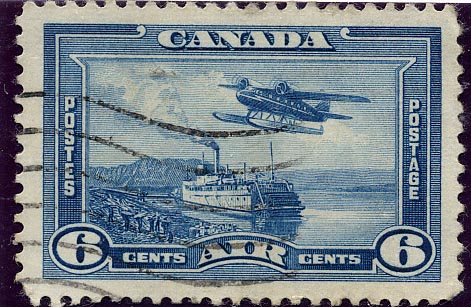
This ship is the third of the name to operate on Canadian rivers. The first, Distributor I, was in service on the Skeena river, British Columbia, during the construction of the Grand Trunk Pacific Railway. Eventually she was taken to Esquimalt where the hull was dismantled and the machinery removed and transported to the Thompson river, British Columbia, where it was installed in a new hull.
The result was the Distributor II, which operated along the river during the construction of the Canadian Northern Railway. When this work ended, the dismantling process was again repeated and the engines, boilers and fittings were transported to the Mackenzie river, where they were installed in the hull of the Distributor III, at Fort Smith, by George Askew, a Vancouver shipwright, for her owners, Lampson and Hubbard. That was in1920, and three years later the Hudson's Bay Company bought the stern wheeler.
On the Mackenzie river, in the downbound direction, the Distributor III was usually loaded with general cargo for the Hudson's Bay forts. Upbound she brought back pelts from these posts and also usually carried some passengers, mostly missionaries, both Anglican and Roman Catholic. She maintained a service between Fort Smith and Aklavik, two North West Territory localities 1,500 miles distant from one another. The ship made two round trips per season, towing two large barges laden with goods on the downbound journey. She burned 4 ft. pine logs, cut in winter and piled up in various strategic points along the ship's course.
In 1944 the Distributor III made her last trip as a wood-burning steamer, under the command of Capt. Brayshaw. During the following winter she was fitted to burn oil fuel and it was intended that after the conversion she should make three round trips instead of two. But on her second trip, when going upstream, she broke her shaft near Fort Norman, on the lower Mackenzie. She was docked at the Imperial Oil Wharf at Norman Wells and spent a long time undergoing repairs. Finally the ship reached Fort Smith and started on her way down, on the third trip, but owing to the delay it was very late in the season.
It was equinoctial time and the vessel had two barges in tow. Under the command of Capt. Malcolm Macdonald, from the Hebrides, she was crossing the Great Slave Lake, heading for the mouth of the Mackenzie river, when she was battered by an equinoctial gale coming from the NW. The captain ordered the barges' tow lines to be cut, and they were left to their fate, but the Distributor III was still in jeopardy and was blown on to the shore of the Great Slave Lake, a little to the east of Hay river.
That was in September 1945. Crew members searched along the shore for the missing barges, one of them being located after 10 days in a damaged condition, but with two dogs, which were being carried as freight for the Postmaster at Eldorado, Saskatchewan, still standing in their chains. The dogs were rescued and eventually reached their destination the following summer. The Distributor III was refloated after repairs during the summer of 1946. She was towed into Fort Smith, but never again went back into service.
SG371 Sea Breezes 7/63
